An Overview of the French Colonial Coinage of Cameroon
I've hesitated to join the PCGS boards for a number of reasons, but the foreign coin section here seems to be a bit more active than other places, so I signed up. Many of you probably know me from other boards. I love French Colonial coinage. I'm currently focusing on 20th century colonies, but plan to move back in time eventually. I have completed Cameroon, Madagascar, and Morocco.
Modern day Cameroon was originally claimed by the French in the 19th century, and was part of the French Equatorial Africa. After the Agadir Crisis, Cameroon was ceded to German and relabeled Neukamerun. However, the territory was mandated back to France by the League of Nations in the aftermath of World War I, with parts also given to Britain. France generally relegated control to the tribal leaders, but retained the judicial and police systems. Great care was taken to remove all traces of former German control, and Cameroun became a thriving colony – exporting cotton, wood, and coffee.
The Union of the Peoples of Cameroon was founded as an anti-colonialist league in 1948. When it was outlawed in 1955, war broke out. Ruben Um Nyobé led a guerilla war against the French, resulting in autonomy in 1956. Cameroon was finally granted full independence in 1960, although a civil war continued for many years.
The coinage of French Colonial Cameroon can be divided into 4 distinct groups. The first is the beautiful laureated head, designed by Henry Auguste Jules Patey. He was the Chief Engraver of the French mint from 1896 until 1930. His privy mark is the torch, and appears on all coins struck under his authority. The cornucopia privy mark, for the Paris mint, is also on these coins. The reverse has a bundle of three branches, like ferns or palm fronds. 50 centimes, 1 franc, and 2 francs were struck in 1924, 1925, but in 1926 it was 50 centimes and 1 franc onl. These coins are readily available for type, but assembling the complete set is probably going to take a little more effort. The 2 franc coin is scarce in higher grades, and 1925 in all denominations is key.
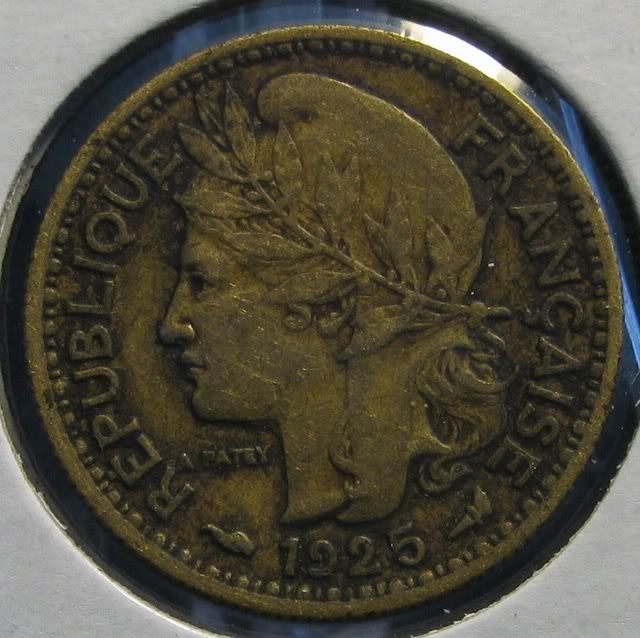
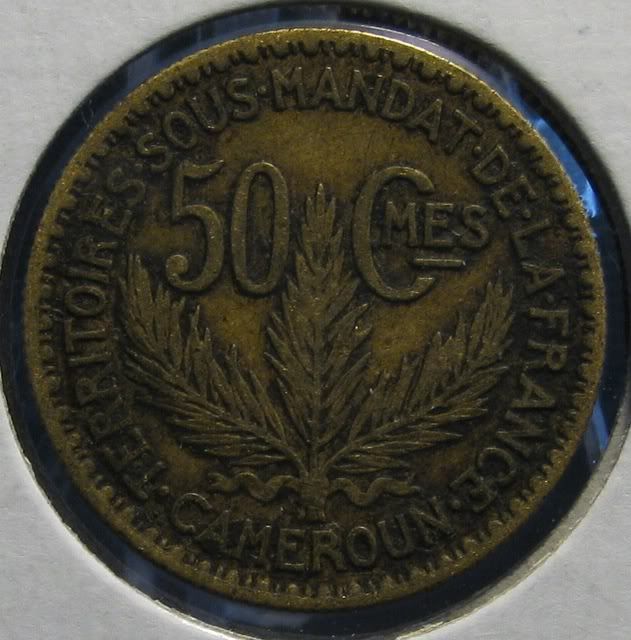
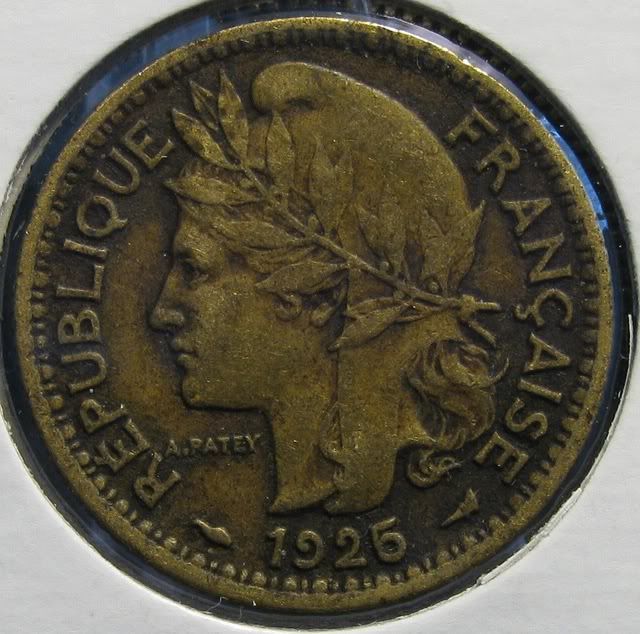
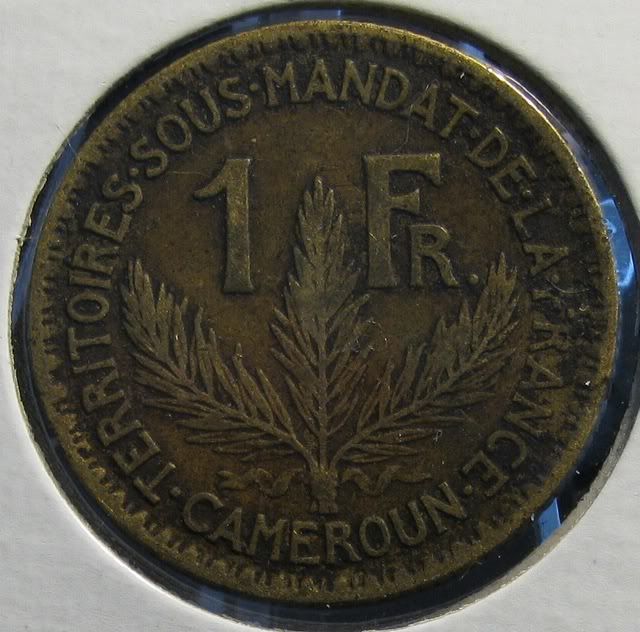
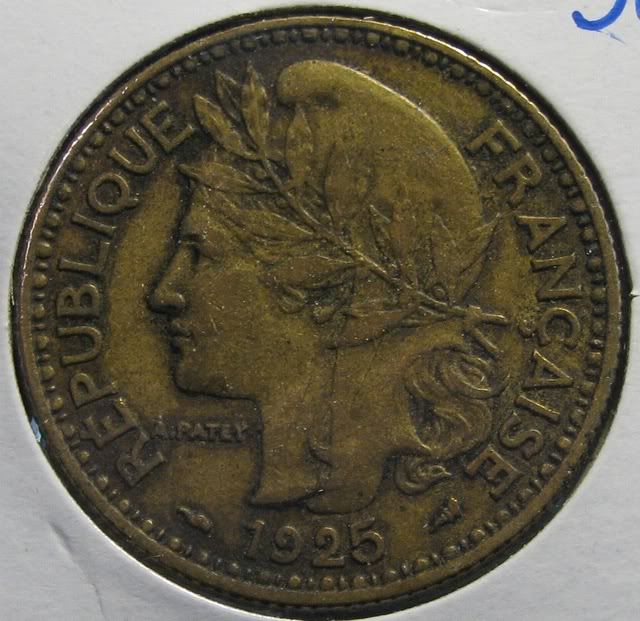
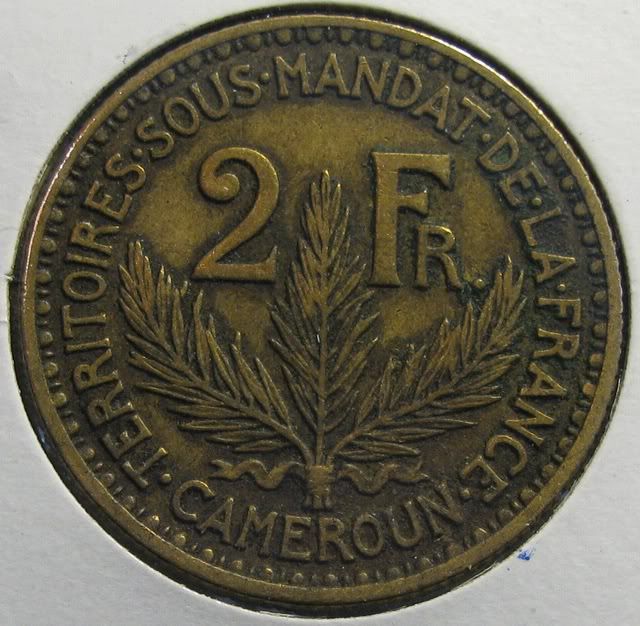
The second group is the Free French WWII coinage, featuring a rooster and the Cross of Lorraine. As others and I have mentioned before, this coinage is very difficult, especially when searching for high grade, problem free specimens. They are much harder to locate than the price would indicate. These coins were all struck in Praetoria, South Africa. There are two varieties for each denomination of this group - half the coins were struck with the legend "Cameroun Francais" below the rooster, and half were struck with the legend "Cameroun Francais Libre." Despite the mintages being listed as the same in Krause, the "Libre" coinage is harder to find, and worth more.
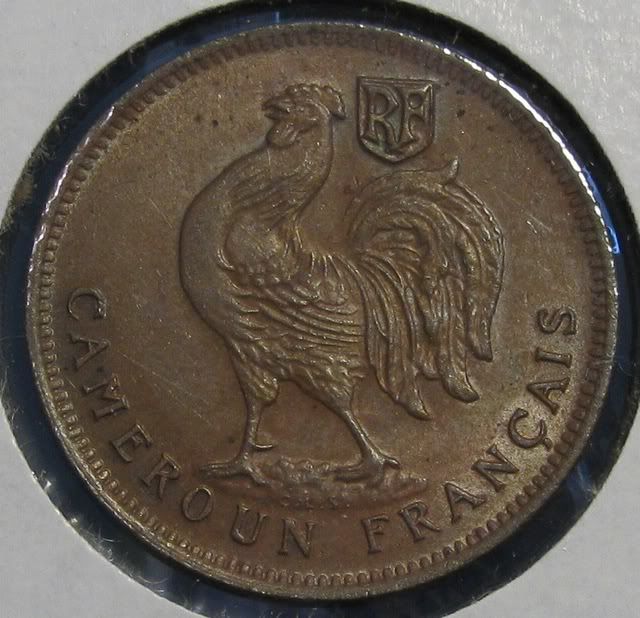

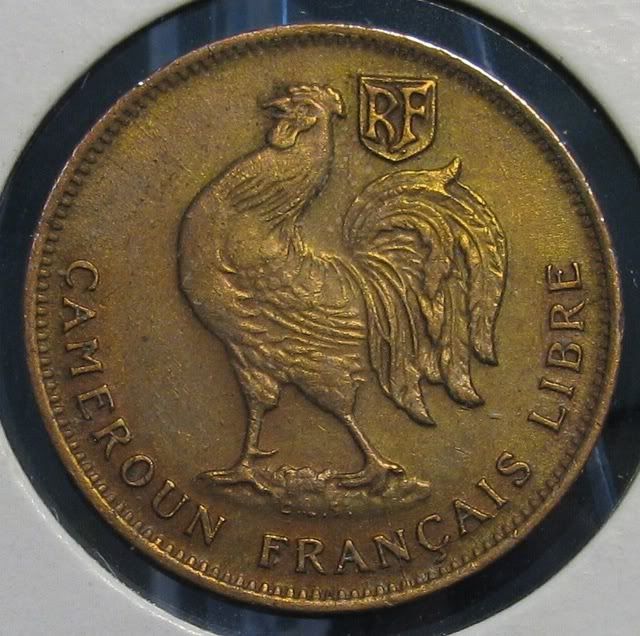
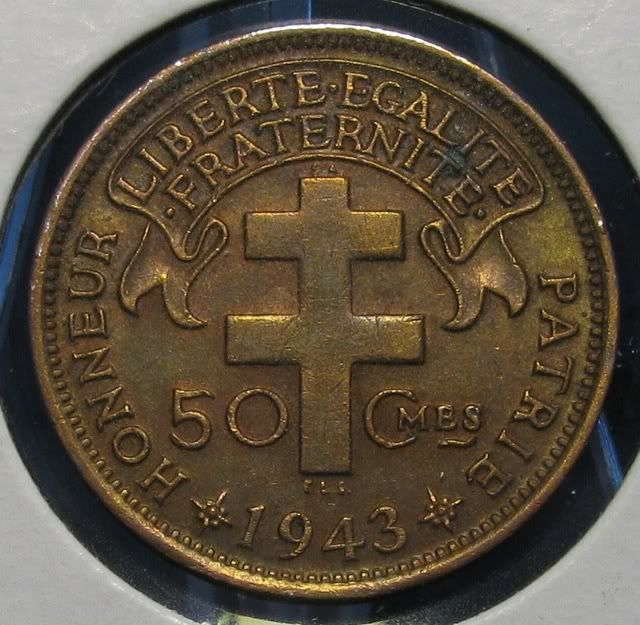
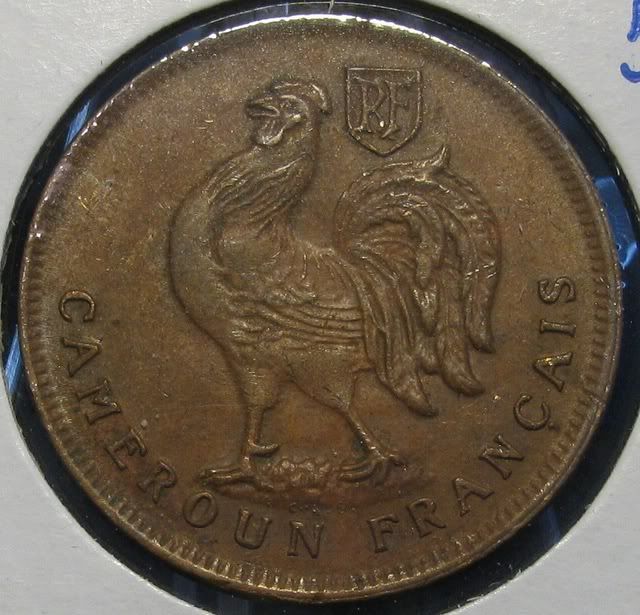
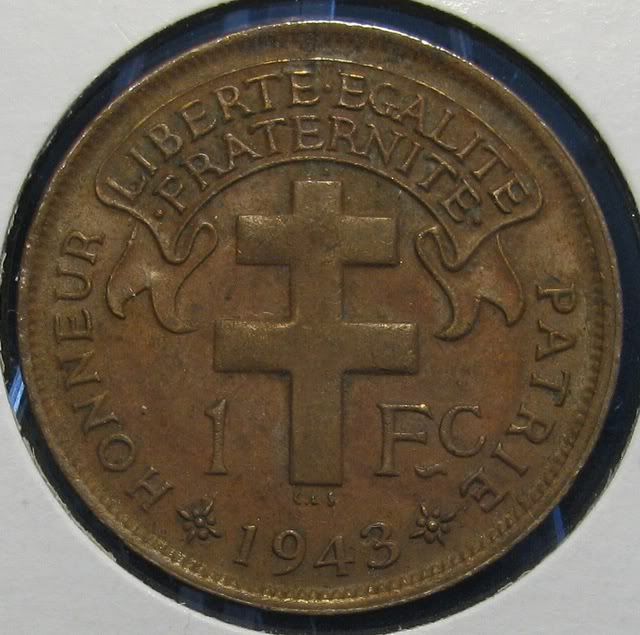
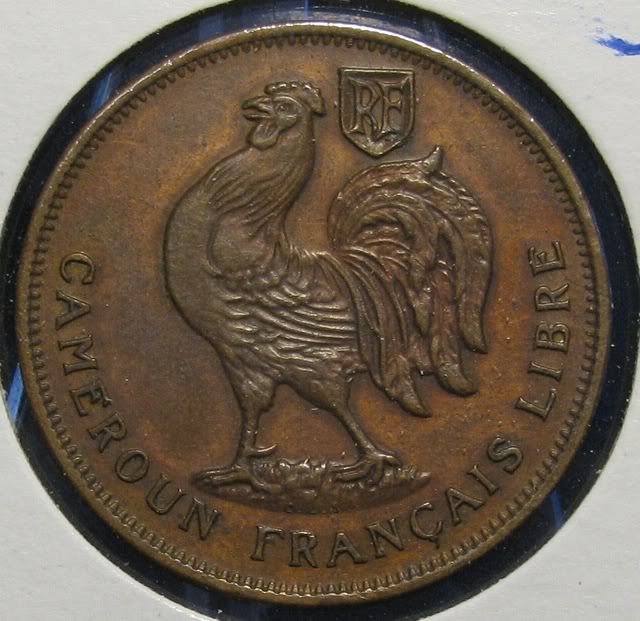

The third group is the familiar bust of Marianne with ships common to all French Colonial coinage of this era. The reverse features a gazelle. Struck in 1948, the Cameroon issues consist of a franc and 2 franc coins. These were designed by the new Chief Engraver, Lucien Bazor, and feature his privy mark - the wing. These coins are widely available, and collectors should not settle for less than Gem BU specimens. The aluminum composition of these coins often causes spottiness or other unsightly blemishes, so be sure to take the time to find clean examples.
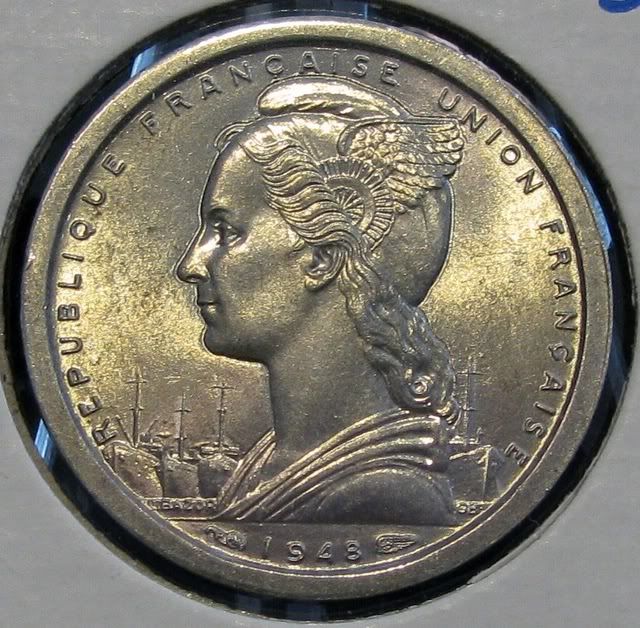
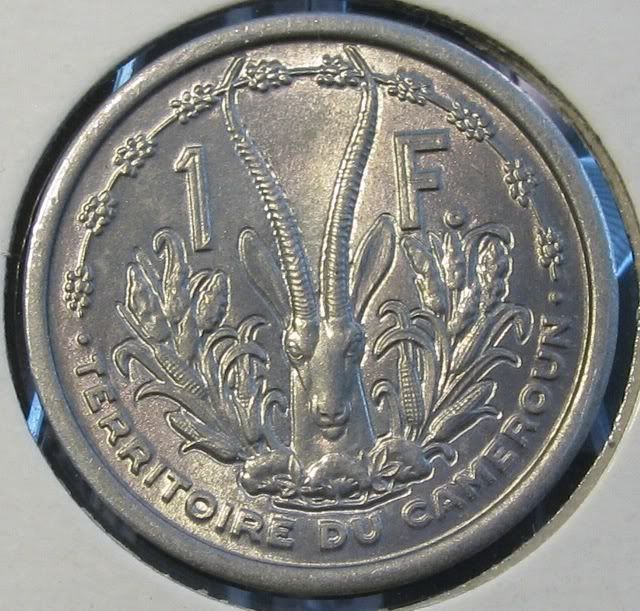
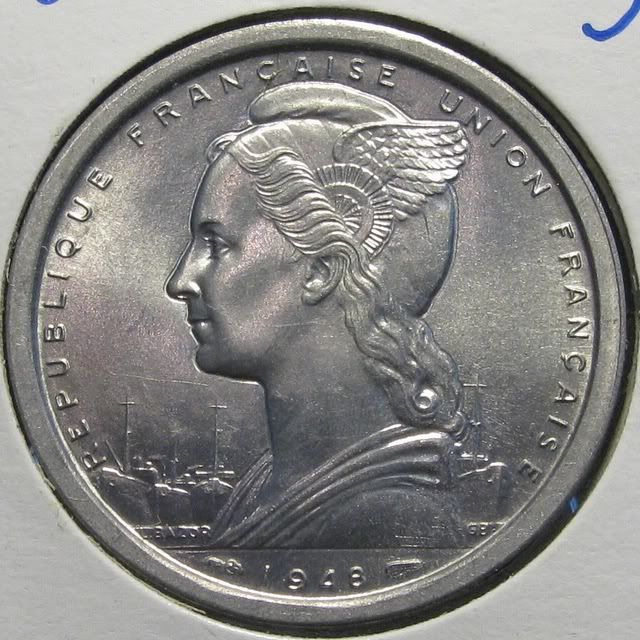
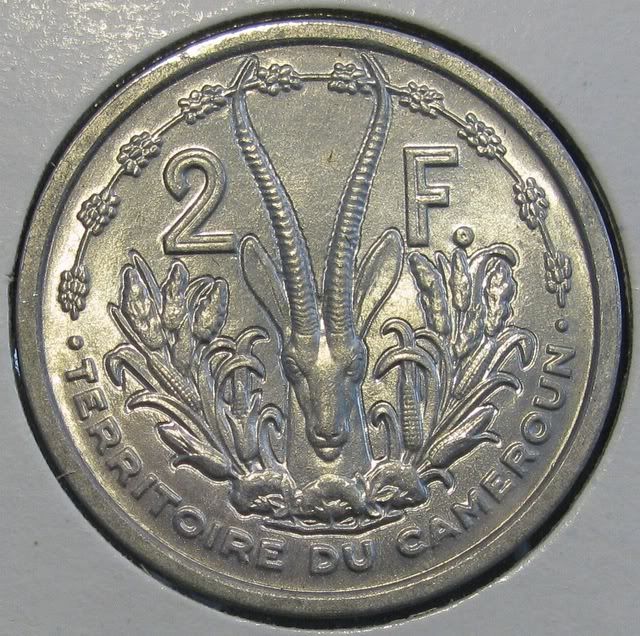
The fourth group comes from the troubled time of transition between colony and fully independent country. Struck in 1958, the 5, 10, and 25 franc coins feature three giant eland on the obverse, and the denomination on the reverse. They were designed by Lucien Bazor, and struck at the Paris mint. These too are widely available, and can be obtained for very little money.
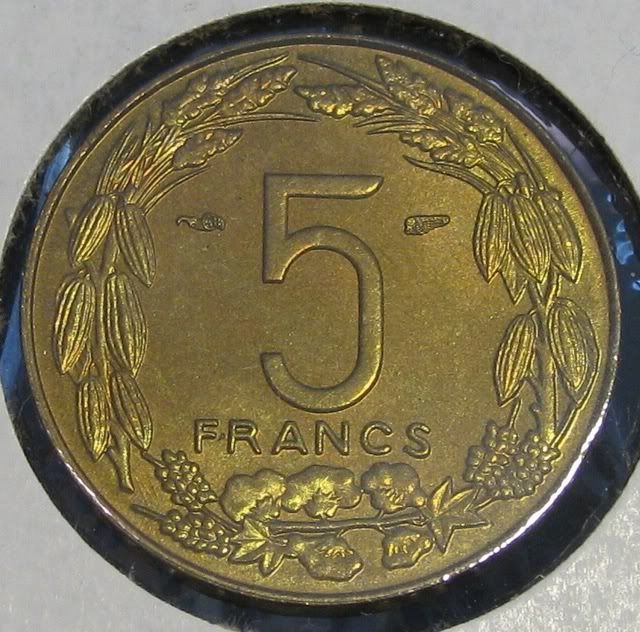
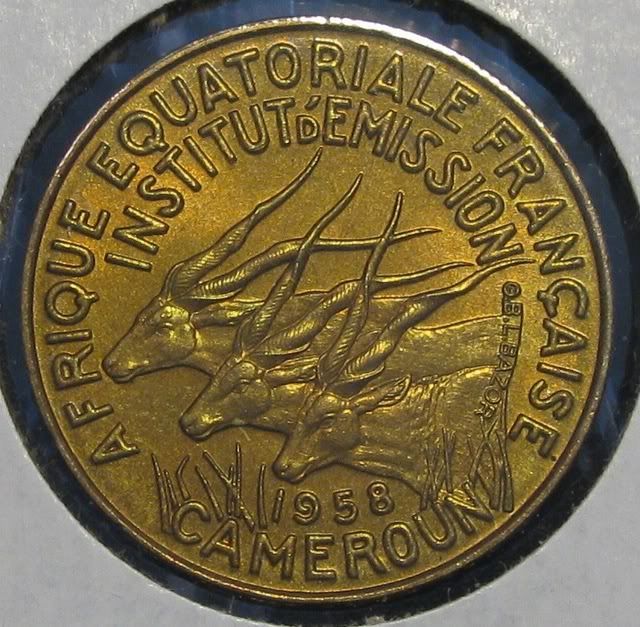
The French Colonial Coinage of Cameroon is a very interesting set, and one which I encourage you to attempt. I put my complete 17 coin set together in about a year, and only spent $165 on it. Its always refreshing to be able to take a break from the high dollar sets and put together a set like this - an attractive group of artistically pleasing coins, for not much money.
To see my complete set, see my photobucket album
Comments, questions, complaints all welcome! If you have any of these coins, post them!
Modern day Cameroon was originally claimed by the French in the 19th century, and was part of the French Equatorial Africa. After the Agadir Crisis, Cameroon was ceded to German and relabeled Neukamerun. However, the territory was mandated back to France by the League of Nations in the aftermath of World War I, with parts also given to Britain. France generally relegated control to the tribal leaders, but retained the judicial and police systems. Great care was taken to remove all traces of former German control, and Cameroun became a thriving colony – exporting cotton, wood, and coffee.
The Union of the Peoples of Cameroon was founded as an anti-colonialist league in 1948. When it was outlawed in 1955, war broke out. Ruben Um Nyobé led a guerilla war against the French, resulting in autonomy in 1956. Cameroon was finally granted full independence in 1960, although a civil war continued for many years.
The coinage of French Colonial Cameroon can be divided into 4 distinct groups. The first is the beautiful laureated head, designed by Henry Auguste Jules Patey. He was the Chief Engraver of the French mint from 1896 until 1930. His privy mark is the torch, and appears on all coins struck under his authority. The cornucopia privy mark, for the Paris mint, is also on these coins. The reverse has a bundle of three branches, like ferns or palm fronds. 50 centimes, 1 franc, and 2 francs were struck in 1924, 1925, but in 1926 it was 50 centimes and 1 franc onl. These coins are readily available for type, but assembling the complete set is probably going to take a little more effort. The 2 franc coin is scarce in higher grades, and 1925 in all denominations is key.






The second group is the Free French WWII coinage, featuring a rooster and the Cross of Lorraine. As others and I have mentioned before, this coinage is very difficult, especially when searching for high grade, problem free specimens. They are much harder to locate than the price would indicate. These coins were all struck in Praetoria, South Africa. There are two varieties for each denomination of this group - half the coins were struck with the legend "Cameroun Francais" below the rooster, and half were struck with the legend "Cameroun Francais Libre." Despite the mintages being listed as the same in Krause, the "Libre" coinage is harder to find, and worth more.








The third group is the familiar bust of Marianne with ships common to all French Colonial coinage of this era. The reverse features a gazelle. Struck in 1948, the Cameroon issues consist of a franc and 2 franc coins. These were designed by the new Chief Engraver, Lucien Bazor, and feature his privy mark - the wing. These coins are widely available, and collectors should not settle for less than Gem BU specimens. The aluminum composition of these coins often causes spottiness or other unsightly blemishes, so be sure to take the time to find clean examples.




The fourth group comes from the troubled time of transition between colony and fully independent country. Struck in 1958, the 5, 10, and 25 franc coins feature three giant eland on the obverse, and the denomination on the reverse. They were designed by Lucien Bazor, and struck at the Paris mint. These too are widely available, and can be obtained for very little money.


The French Colonial Coinage of Cameroon is a very interesting set, and one which I encourage you to attempt. I put my complete 17 coin set together in about a year, and only spent $165 on it. Its always refreshing to be able to take a break from the high dollar sets and put together a set like this - an attractive group of artistically pleasing coins, for not much money.
To see my complete set, see my photobucket album
Comments, questions, complaints all welcome! If you have any of these coins, post them!
0
Comments
I never did pick up on the Cameroon series but spent some time there many years ago and occasionally my thoughts lead back to it. Appreciate your redux.
Well, just Love coins, period.
Experience the World through Numismatics...it's more than you can imagine.
Thanks for taking the time.
is that you end up being governed by inferiors. – Plato
Thanks for sharing.
Jim
edited to add: Welcome to the Forums!!
I've been dabbling in French Colonials lately and this was extremely informative.
Welcome to the board.
I can think of far worse things to focus on than French colonial coins. They've got nice designs. I like the look some of that "dirty" aluminum-bronze gets when it gets a bit of dark toning to it. And the aluminums always look nice in high grade.
Cathy
don't have any of these in my African sets because they are not coppers (or bronze), but very nice coins none-the-less!
Total Copper Nutcase - African, British Ships, Channel Islands!!!
'Do not meddle in the affairs of dragons, for you are crunchy and taste good with ketchup'
<< <i>don't have any of these in my African sets because they are not coppers (or bronze), but very nice coins none-the-less! >>
The 1943 - 1 Franc and 50 Centimes are bronze